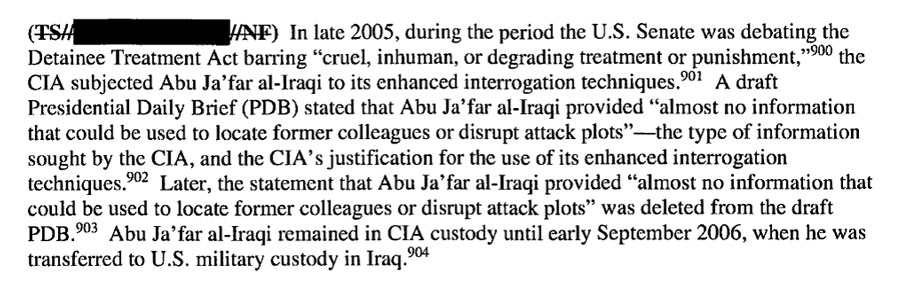The Torture Report tells the story of the CIA torture program essentially in the CIA’s own words. That is to say, the Report is derived from CIA records, including but not limited to operational cables, reports, internal memos, emails, letters, briefing materials, intelligence products, classified testimony and summaries of more than 100 CIA inspector general interviews with CIA personnel. Almost every fact in the Torture Report is sourced to a CIA record, which is why it contains nearly 38,000 footnotes. It is also why the Report can fairly be said to have provided an objective and unvarnished recounting of what the CIA did and the consequences that flowed.
Here is just one example, related to torture’s efficacy and the way in which the CIA misrepresented—in this case, to the President of the United States—whether torture was working:


According to the CIA, these are some of the abuses to which Abu Jafar al-Iraqi was subjected:

Because the Torture Report was developed this way—on the basis of the CIA’s own records—it is not surprising that a still-secret internal CIA review evidently of those same records (known as the Panetta Review) reached many of the same findings as the Torture Report. What is surprising, and deeply troubling, is that the CIA’s formal written response to the Torture Report, prepared long after the Panetta Review, differs from the Panetta Review in fundamental ways that paint the agency and the program in a far better light. In late 2014, former Senator Mark Udall, then a member of the Senate intelligence committee, described the Panetta Review as “a smoking gun.”
Read More